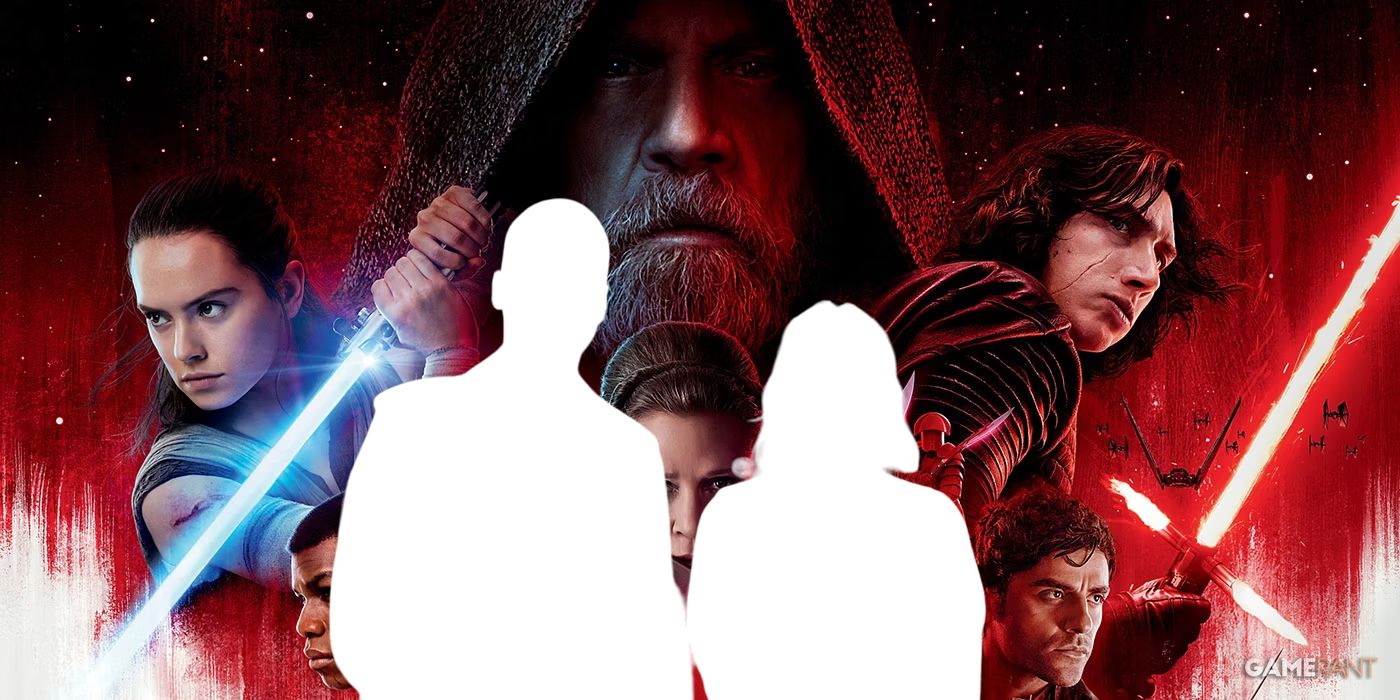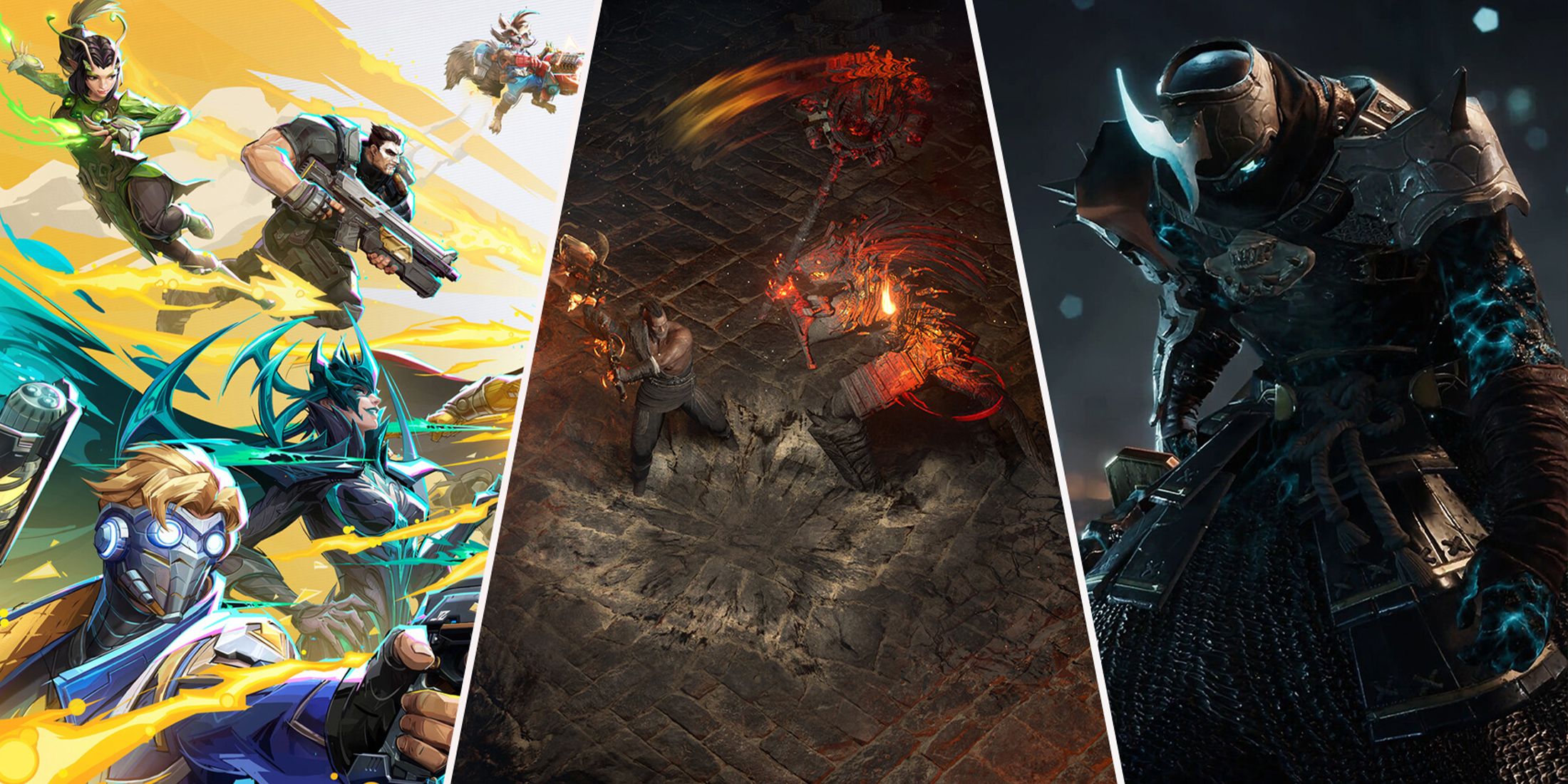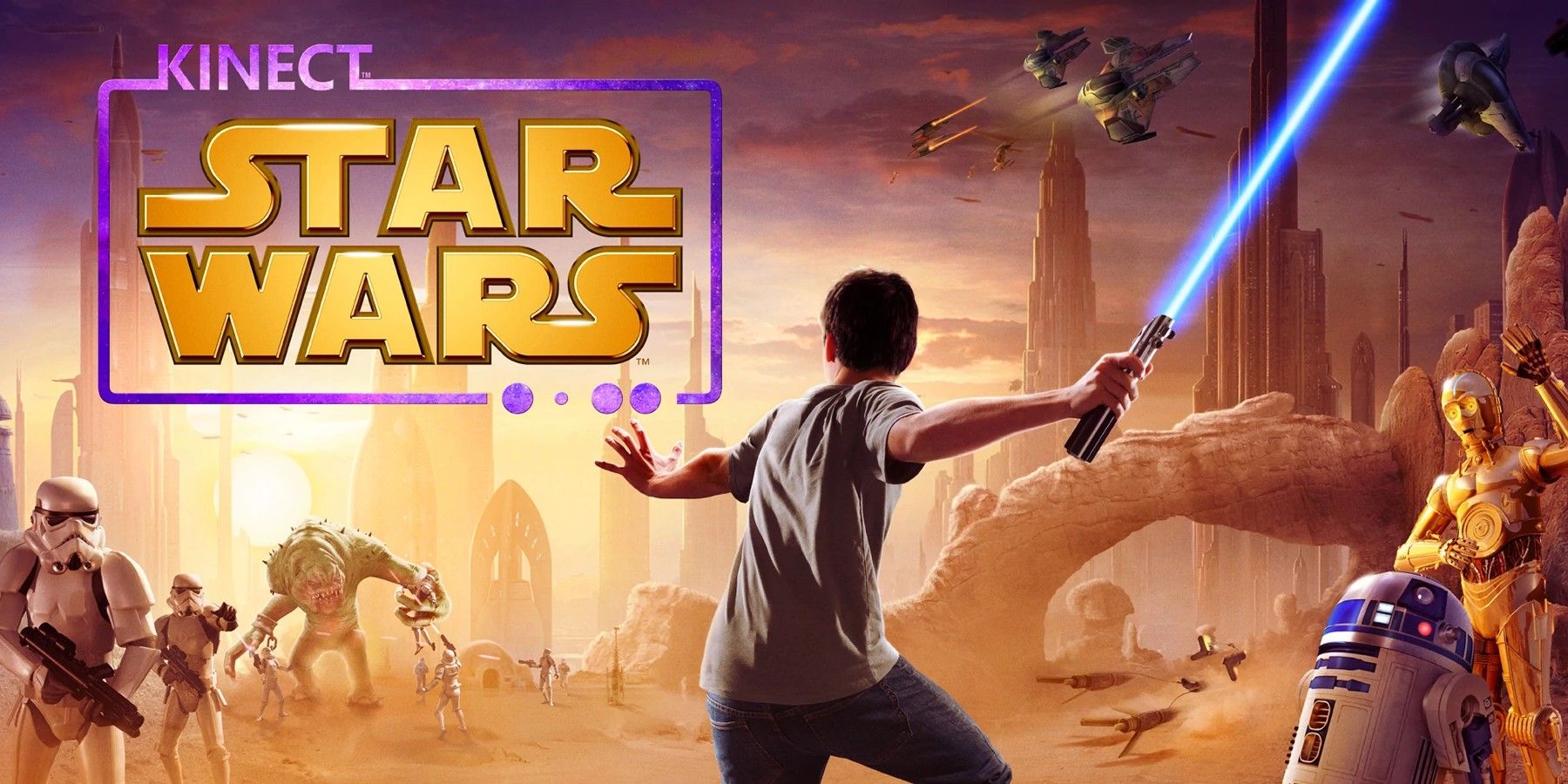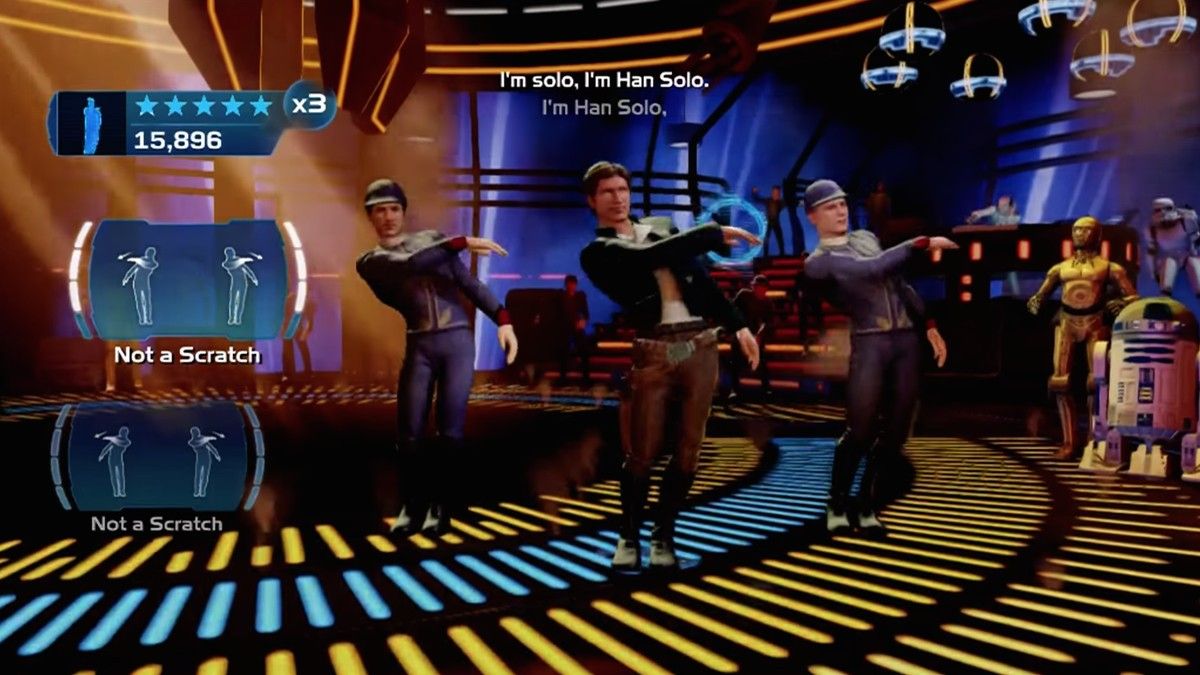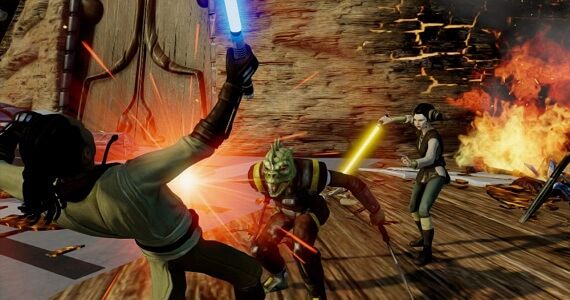Star Wars video games have varied pretty wildly in quality over the last 40 years. At the top of the pile are beloved classics like Knights of the Old Republic, Rogue Squadron, and the original Battlefront 2. Then there's the middle echelon, filled with decent but flawed titles like the Starfighter series and the Revenge of the Sith tie-in game. While the vast majority of Star Wars games land somewhere in between these two, there are a select few that drop to the very bottom, becoming infamous for their absurdity. Kinect Star Wars is one such game.
Releasing on April 3, 2012, Kinect Star Wars has become one of the most memorable Star Wars games in existence, but not for the right reasons. Where KOTOR is remembered for its characters, scope, and world-building, Kinect Star Wars is remembered for its blatant failures. Being one of the Kinect's flagship titles, Star Wars fans hoped the Xbox's controller-free peripheral would elevate Star Wars games to the next level. However, with a collection of half-baked mini-games, finnicky motion controls, and some pretty absurd presentation, Kinect Star Wars failed to deliver on its promise. However even now, 10 years later, Kinect Star Wars is far from being forgotten.
Living On In Infamy
Upon its initial release, Kinect Star Wars was met with some pretty mixed reviews from critics. Some critics actually gave the game a decent score, citing some mini-games as being fairly ambitious, albeit underdeveloped. The main "Jedi Destiny" mode, for instance, was commended by a good portion of reviewers, who believed that the novelty of swinging a lightsaber and using the Force with no controller in hand was enough to keep players entertained for at least a few hours.
However, one aspect that critics were fairly unanimous on was the game's poor controls. In the vast majority of the game's modes, the motion controls simply wouldn't work accurately a good amount of the time, often leading to a lot of frustration. While the game had strong potential, with a gimmick that could certainly please Star Wars fans, the execution of it left a lot to be desired.
Aside from the main "Jedi Destiny" story mode, Kinect Star Wars had three other mini-games. "Podracing" allowed players to get behind the console of a Podracer, as seen in The Phantom Menace. Using their arms to extend and pull back non-existent throttles, players could race around a variety of Star Wars planets. This mode was met with generally positive reviews, but again, the often unresponsive motion controls diminished any embers of fun.
"Rancor Rampage" fared a little better in the control department, with the game only requiring wide arm swings. While these simpler controls made the experience a little more enjoyable to play, it also left the mini-game feeling pretty dull to play after a round or two, with no extra mechanics or obstacles being thrown at the player.
There's one game mode that divided critics on release, and has since become synonymous with the very name Kinect Star Wars. Titled "Galactic Dance-Off," this mini-game is essentially a Just Dance clone, but as opposed to dancing alongside some colorful faceless sprites, players are grooving in front of their favorite Star Wars characters who, in a truly bold move, are also dancing.
In the 10 years that have followed since its original release, Kinect Star Wars' "Galactic Dance-Off" mode has become truly infamous. A particular favorite stage of many fans, and one that still crops up in meme compilations and videos across the internet, is the Cloud City Carbon Freezing Chamber stage, where everyone's favorite smuggler stands in front of the player and proceeds to dance emphatically to a Star Wars-themed cover of "Ridin' Solo," cleverly renamed to "I'm Han Solo."
With inspired lyrics like "I'm so happy the Carbonite is gone" and "I'm jumping in my Falcon, Wookie at my side," along with the incredibly enthusiastic performances on-screen, this game mode quickly became Kinect Star Wars' defining aspect. The sheer absurdity of slave Princess Leia dancing to "Hologram Girl," a cover of a Gwen Stefani classic, while Jabba's entourage watches from the sidelines is enough to make any Star Wars fan confused, but indescribably compelled.
A Symbol of Kinect's Failure
While Kinect Star Wars is mostly remembered for its heavily meme'd mini-game, for some Xbox fans, it's come to symbolize the entirety of the Kinect's disappointing career. Much like the Kinect itself, Kinect Star Wars had a lot of promise, and while the team behind it certainly tried its hardest, the end result is a disheartening compilation of half-baked ideas.
Kinect Star Wars' main "Jedi Destiny" story mode has a solid foundation, taking place just after The Phantom Menace, and taking players right up until the closing moments of Revenge of the Sith, all while encountering iconic Star Wars foes across a number of beloved Star Wars locales. However, the unresponsive, clunky motion-based controls, some extremely repetitive gameplay, and a weak narrative through-line ensures that most players won't get far enough in to experience any positive elements.
The lack of meaningful, responsive, and evolving gameplay is what killed Kinect Star Wars on arrival, and the same can be said for the Kinect as a whole. Although a few Kinect titles came close to pushing the boundaries of gaming, just as the Kinect had originally promised, they all ultimately fell short in one way or another, and left the Kinect with a disappointing legacy. So while Kinect Star Wars, and the Kinect itself, didn't live up to their potential, at least they're still remembered, albeit in meme format.
Kinect Star Wars is available on the Xbox 360.


